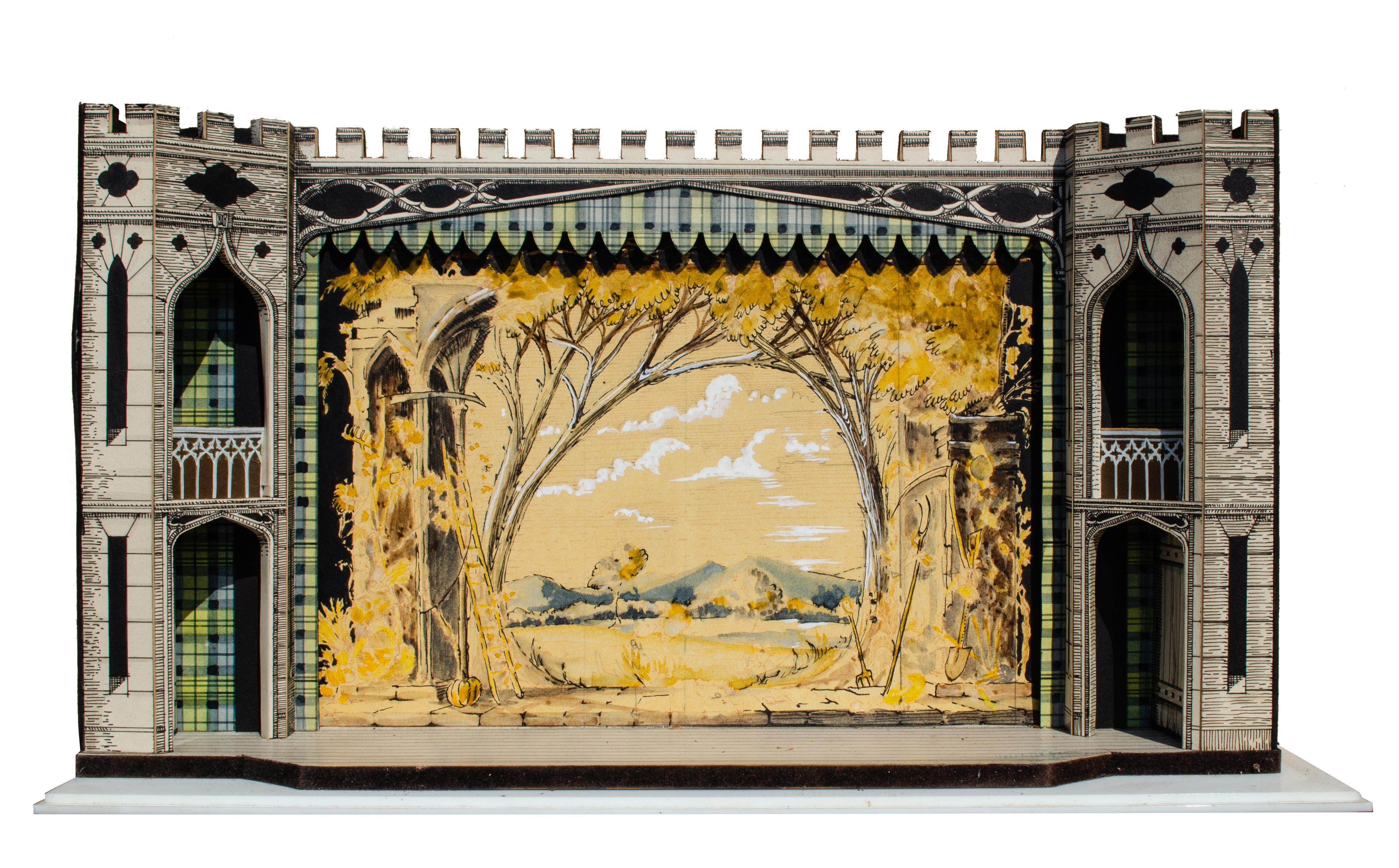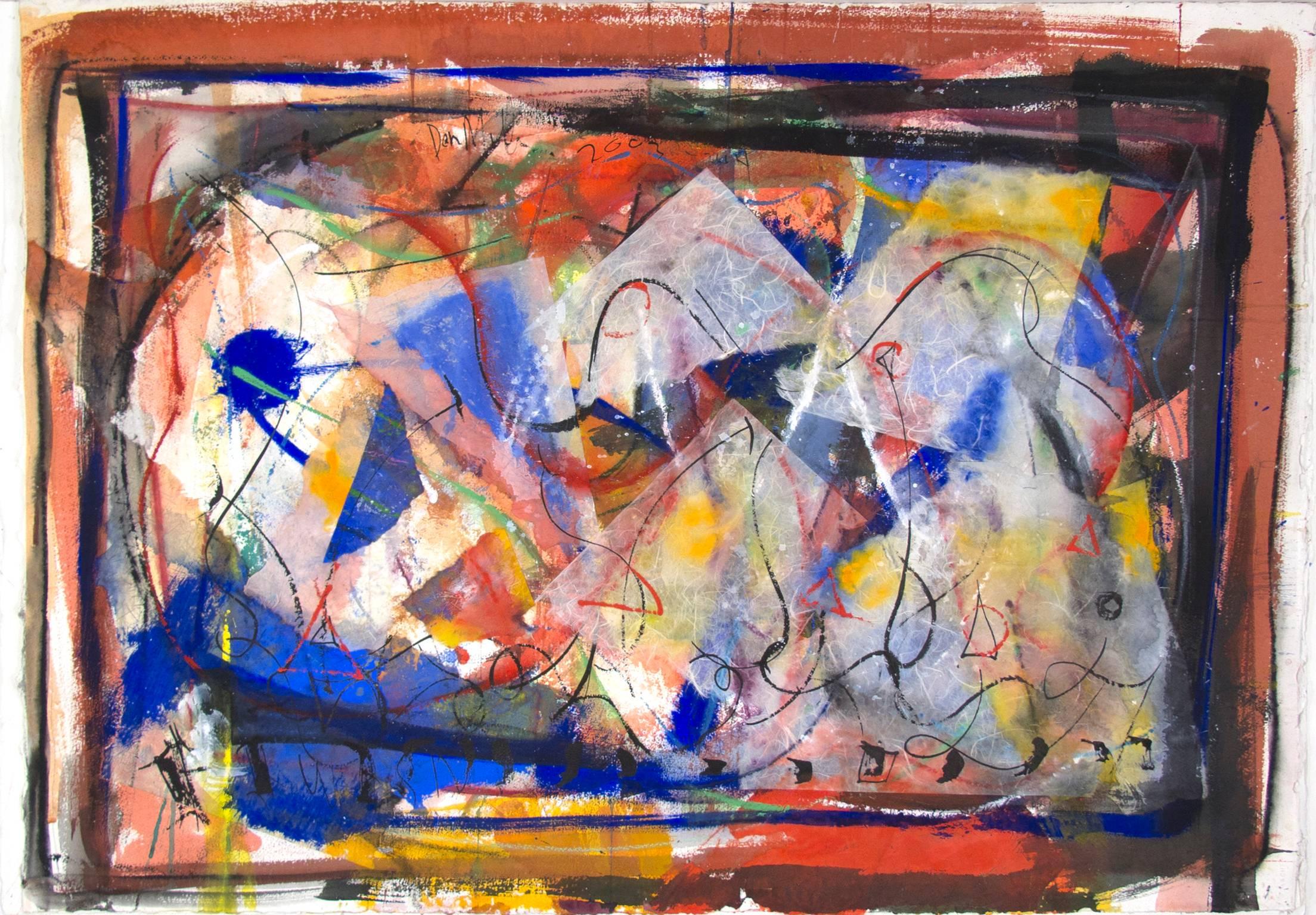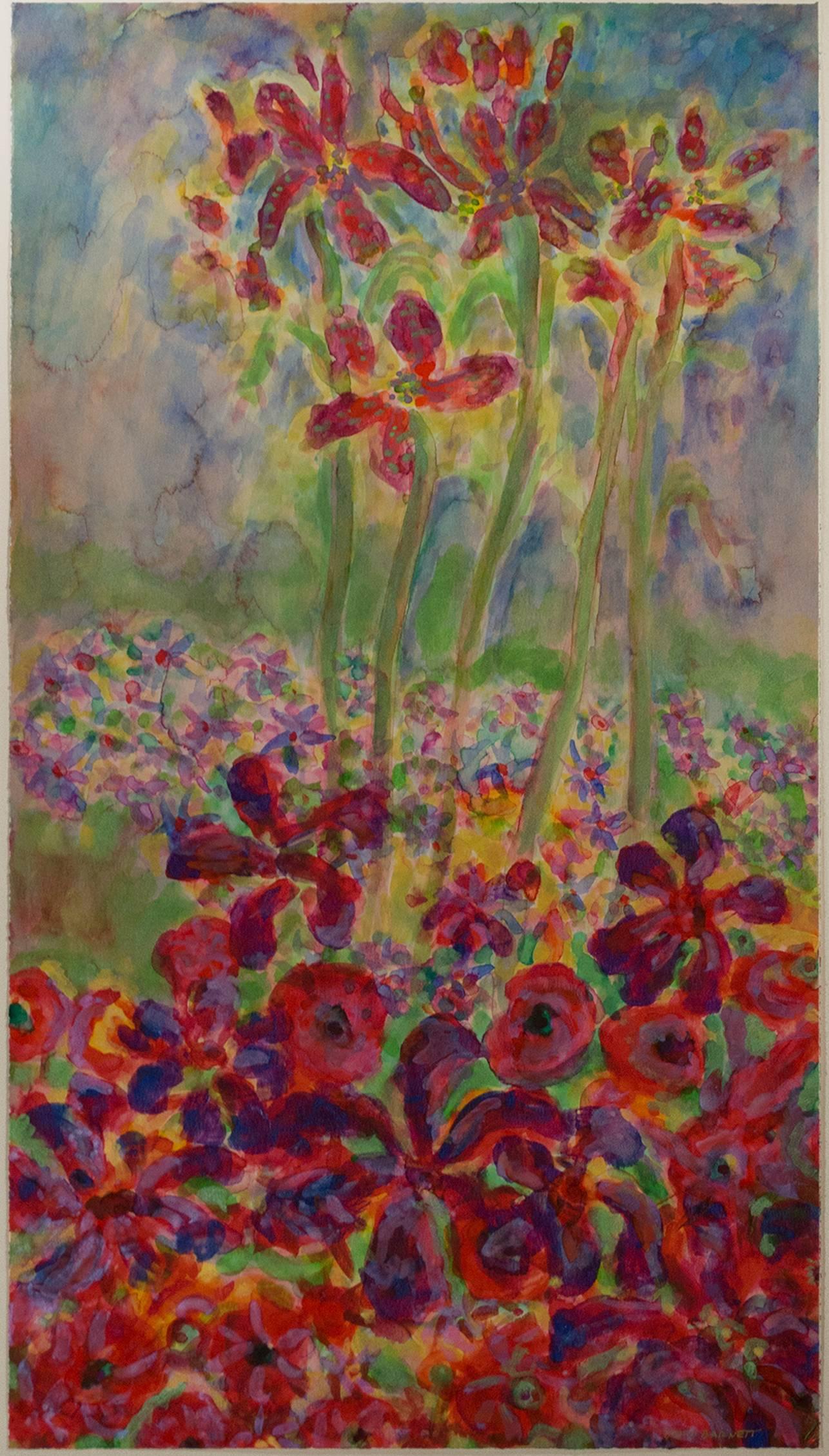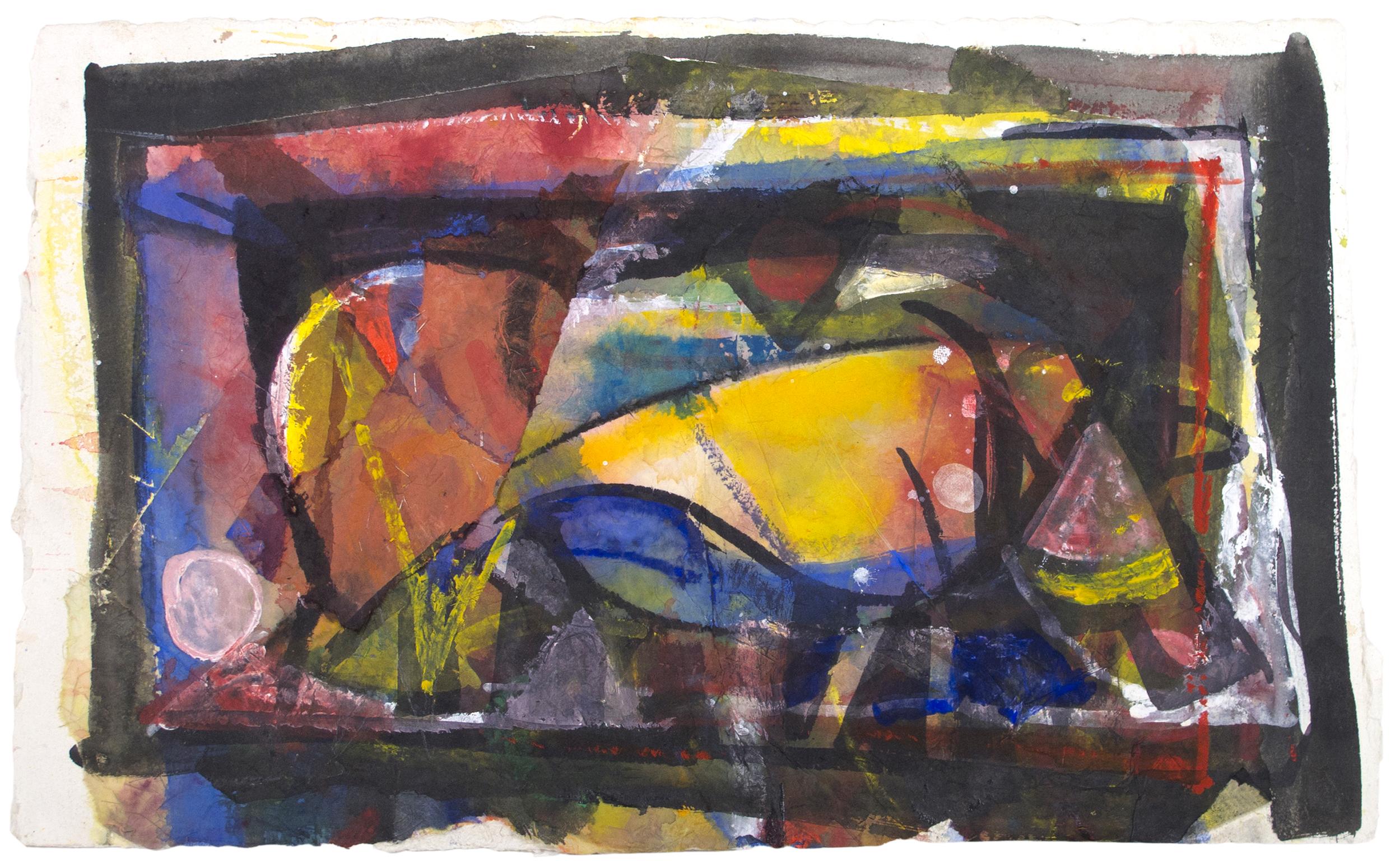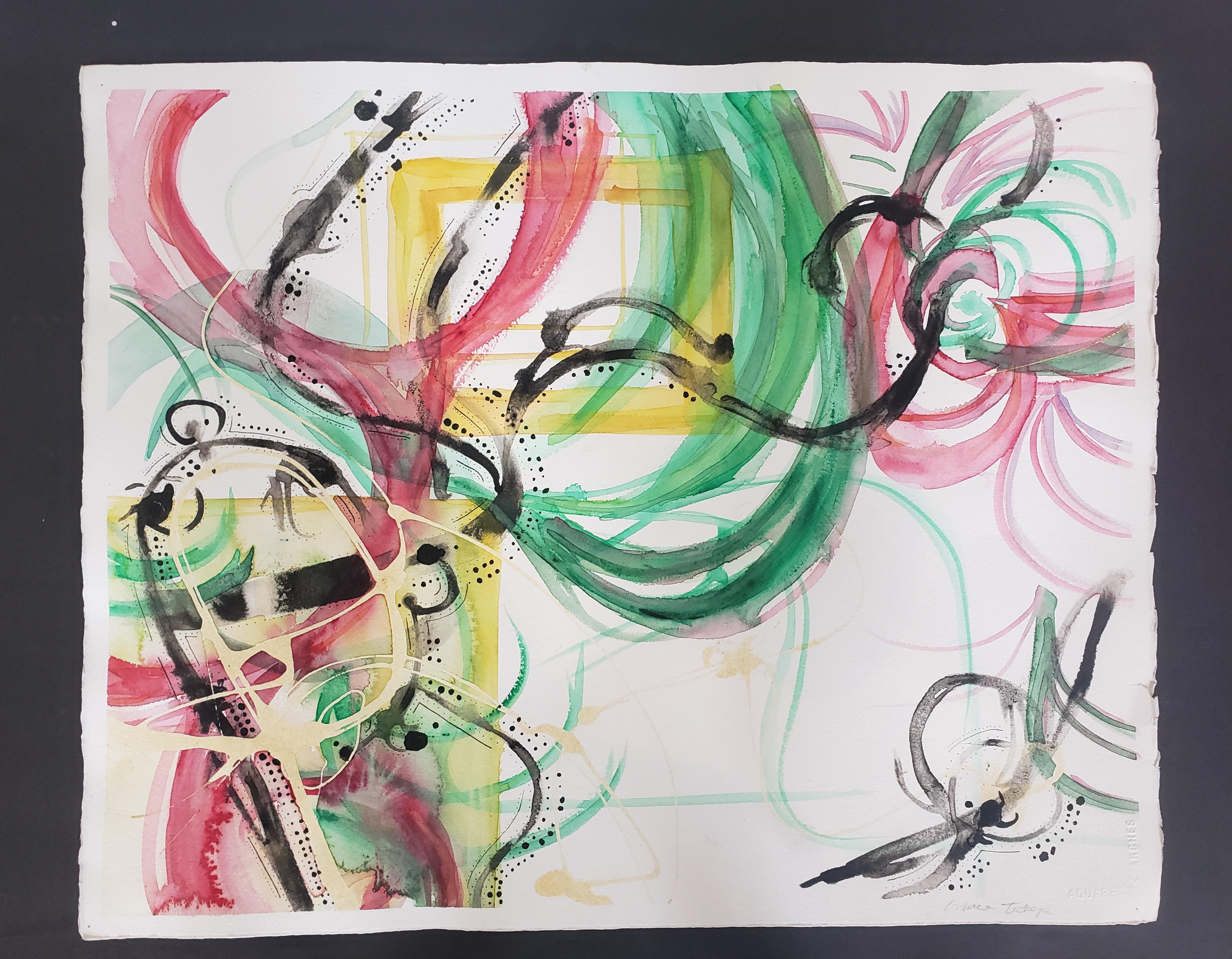Items Similar to "Land, Sea, Sky, Shagbark Hickory: Earth Spirit" a Mixed Media signed by Barnett
Want more images or videos?
Request additional images or videos from the seller
1 of 5
David Barnett"Land, Sea, Sky, Shagbark Hickory: Earth Spirit" a Mixed Media signed by Barnett2009
2009
About the Item
"Land, Sea, Sky, Shagbark Hickory: Earth Spirit" is a mixed media piece by David Barnett. It is a photograph embellished with ink and watercolor and is signed lower right in pencil. This photograph depicts a cut of wood that had been tunneled through by insects, which the artist photographed and then embellished.
7 5/8" x 6 5/8" art
14 5/8" x 14 1/2" frame
David Barnett an artist, collector, appraiser and gallerist has been passionate about art from the early age of five. David’s career as an art dealer began at age nineteen when, as a fine arts student, he sponsored an exhibition of work by fellow student artists. In 1966, he opened his first gallery in a converted basement apartment at Wisconsin Avenue and 21st Street. In 1985 David moved his gallery from Wisconsin Avenue into the Old Button Mansion on State Street and has been active ever since. David’s talents for recognizing undervalued artists and for meeting the needs of art lovers, art collectors and artists have created a vibrant, flourishing gallery and collection of over 6,000 works of art. David also has work in the permanent collection Scottsdale Museum of Contemporary Art, Arizona.
- Creator:David Barnett (1933, American)
- Creation Year:2009
- Dimensions:Height: 14.625 in (37.15 cm)Width: 14.5 in (36.83 cm)
- Medium:
- Period:
- Condition:
- Gallery Location:Milwaukee, WI
- Reference Number:
About the Seller
4.9
Platinum Seller
These expertly vetted sellers are 1stDibs' most experienced sellers and are rated highest by our customers.
Established in 1966
1stDibs seller since 2017
390 sales on 1stDibs
Typical response time: 1 hour
- ShippingRetrieving quote...Ships From: Milwaukee, WI
- Return PolicyA return for this item may be initiated within 14 days of delivery.
More From This SellerView All
- "Rabbit Disguised as a Tomato Basil Potato Chip, " Mixed Media by David BarnettBy David BarnettLocated in Milwaukee, WI"Rabbit disguised as a Tomato Basil Potato Chip" is an original photograph embellished with ink and watercolor by David Barnett, signed and dated in the lower center. This piece is u...Category
2010s Contemporary Still-life Photography
MaterialsInk, Watercolor, Photographic Paper
- "What Was Before Becomes Now, " an Abstract Mixed Media signed by Dan MullerBy Dan MullerLocated in Milwaukee, WI"What Was Before Becomes Now" is Dan Muller's 1999-2004 mixed media artwork. Blending together colors of red, yellow, blue, and green watercolor, cut and pasted paper, and India ink....Category
21st Century and Contemporary Abstract Mixed Media
MaterialsPaper, India Ink, Mixed Media, Watercolor
- "Grand Studio Celebration Variation, " Mixed Media signed by David BarnettBy David BarnettLocated in Milwaukee, WI"Grand Studio Celebration Variation" is an original mixed media piece by David Barnett. The artist signed the piece in the lower right and used watercolor, ink, and iridescent acryli...Category
2010s Expressionist Mixed Media
MaterialsArchival Ink, Mixed Media, Acrylic, Watercolor, Rag Paper
- "The Fish, " Colorful Mixed Media Abstract Collage by Dan MullerBy Dan MullerLocated in Milwaukee, WI"The Fish" is an original mixed media artwork on paper by Dan Muller. The artist signed the piece. The artist used watercolor, cut & pasted paper, and india ink to create this colorf...Category
Early 2000s Contemporary Mixed Media
MaterialsPaper, India Ink, Mixed Media, Watercolor
- 'Boston Tea Party Celebration III' original watercolor signed by David BarnettBy David BarnettLocated in Milwaukee, WIArtworks in David Barnett's 'Boston Tea Party' series present a playful vision of one of the foundational narratives of the United States. In the imag...Category
2010s Contemporary Abstract Drawings and Watercolors
MaterialsAcrylic, Watercolor, Paper, Ink, Mixed Media
- 'Boston Tea Party with White Tea Bag' original watercolor by David BarnettBy David BarnettLocated in Milwaukee, WIArtworks in David Barnett's 'Boston Tea Party' series present a playful vision of one of the foundational narratives of the United States. In the imag...Category
2010s Contemporary Abstract Drawings and Watercolors
MaterialsPaper, Ink, Acrylic, Mixed Media, Watercolor
You May Also Like
- Great Scot Stage Design Maquette by Helen Pond and Herbert SennLocated in Larchmont, NYHelen Pond and Herbert Senn Great Scot! Set Maquette, 1963 Mixed media (Paper, wood, ink, paint) Overall dimensions (including base): 9 1/2 x 17 3/4 x 4 in. Signed on base: Helen Pon...Category
1960s Other Art Style Mixed Media
MaterialsWood, Paper, Ink, Mixed Media, Watercolor
- Untitled, Ink & Watercolor on Paper, by Modern Artist Sunil Das "In Stock"By Sunil DasLocated in Kolkata, West BengalSunil Das - Untitled Ink & Watercolour on Paper, 10 x 14 inches, 1979 (Unframed & Delivered) Sunil Das (1939-2015) was a Master Modern Indian Artist from Bengal. Extremely successful right from his college days, Sunil Das has been extremely well lauded by art critics, the press, artists and the art and culture glitterati across the world. Sunil das was the youngest artist to have won the National Award - The Taj Shiromani Kala Puraskar Recipient of the much coveted Govt. of India's 4th Highest Civilian Award: The PadmaShree (2014). Highly talented Sunil Das has done shows all across the world, got fame as early as while he was still in college, youngest recipient of the Lalit Kala Academy Awards and received a scholarship to study at L’Ecole Nationale Superior des Beaux arts, Paris. “There are painters who transform the Sun to a yellow spot, but there are others who, with the help of their art and intelligence, transform a yellow spot into Sun" - Pablo Picasso. Sunil Das was exactly one such artist. Style : Sunil Das' style of work is very original and shows no specific influence. He had risen to fame like MF Hussain...Category
1970s Modern Mixed Media
MaterialsInk, Paper, Watercolor, Mixed Media
- Mixed Media -- Untitled 3, Watercolor SeriesBy Grace TataraLocated in Troy, NYThis abstract mixed-media piece brings a great sense of joy and charm to those who view it. It is painted on Arches paper, and employs vibrant colors such as scarlet, cadmium yellow,...Category
Early 2000s Abstract Mixed Media
MaterialsInk, Watercolor, Mixed Media, Rag Paper
- Mixed Media -- Untitled 2, Watercolor SeriesBy Grace TataraLocated in Troy, NYThis abstract mixed-media piece brings a great sense of joy and charm to those who view it. It is painted on Arches paper, and employs vibrant colors such as scarlet, cadmium yellow,...Category
Early 2000s Abstract Mixed Media
MaterialsInk, Watercolor, Mixed Media, Rag Paper
- 1950s Abstract Composition in Brown, Orange and Blue with Black Parallel LinesBy Herbert BayerLocated in Denver, COWatercolor and ink on paper of an abstract composition of brown, orange and blue shapes between black parallel lines throughout the the piece by Herbert Bayer (1900-1985). Presented in a custom black frame with all archival materials. Framed dimensions measure 17 ⅞ x 22 ⅝ x 1 inches. Image size is 10 ¼ x 15 ½ inches. Painting is clean and in very good condition - please contact us for a detailed condition report. Expedited and international shipping is available - please contact us for a quote. About the Artist: Herbert Bayer enjoyed a versatile sixty-year career spanning Europe and America that included abstract and surrealist painting, sculpture, environmental art, industrial design, architecture, murals, graphic design, lithography, photography and tapestry. He was one of the few “total artists” of the twentieth century, producing works that “expressed the needs of an industrial age as well as mirroring the advanced tendencies of the avant-garde.” One of four children of a tax revenue officer growing up in a village in the Austrian Salzkammergut Lake region, Bayer developed a love of nature and a life-long attachment to the mountains. A devotee of the Vienna Secession and the Vienna Workshops (Wiener Werkstätte) whose style influenced Bauhaus craftsmen in the 1920s, his dream of studying at the Academy of Art in Vienna was dashed at age seventeen by his father’s premature death. In 1919 Bayer began an apprenticeship with architect and designer, Georg Schmidthamer, where he produced his first typographic works. Later that same year he moved to Darmstadt, Germany, to work at the Mathildenhöhe Artists’ Colony with architect Emanuel Josef Margold of the Viennese School. As his working apprentice, Bayer first learned about the design of packages – something entirely new at the time – as well as the design of interiors and graphics of a decorative expressionist style, all of which later figured in his professional career. While at Darmstadt, he came across Wassily Kandinsky’s book, Concerning the Spiritual in Art, and learned of the new art school, the Weimar Bauhaus, in which he enrolled in 1921. He initially attended Johannes Itten’s preliminary course, followed by Wassily Kandinsky’s workshop on mural painting. Bayer later recalled, “The early years at the Bauhaus in Weimar became the formative experience of my subsequent work.” Following graduation in 1925, he was appointed head of the newly-created workshop for print and advertising at the Dessau Bauhaus that also produced the school’s own print works. During this time he designed the “Universal” typeface emphasizing legibility by removing the ornaments from letterforms (serifs). Three years later he left the Bauhaus to focus more on his own artwork, moving to Berlin where he worked as a graphic designer in advertising and as an artistic director of the Dorland Studio advertising agency. (Forty years later he designed a vast traveling exhibition, catalog and poster -- 50 Jahre Bauhaus -- shown in Germany, South America, Japan, Canada and the United States.) In pre-World War II Berlin he also pursued the design of exhibitions, painting, photography and photomontage, and was art director of Vogue magazine in Paris. On account of his previous association with the Bauhaus, the German Nazis removed his paintings from German museums and included him among the artists in a large exhibition entitled Degenerate Art (Entartete Kunst) that toured German and Austrian museums in 1937. His inclusion in that exhibition and the worsening political conditions in Nazi Germany prompted him to travel to New York that year with Marcel Breuer, meeting with former Bauhaus colleagues, Walter Gropius and László Moholy-Nagy to explore the possibilities of employment after immigration to the United States. In 1938 Bayer permanently relocated to the United States, settling in New York where he had a long and distinguished career in practically every aspect of the graphic arts, working for drug companies, magazines, department stores, and industrial corporations. In 1938 he arranged the exhibition, “Bauhaus 1919-1928” at the Museum of Modern Art, followed later by “Road to Victory” (1942, directed by Edward Steichen), “Airways to Peace” (1943) and “Art in Progress” (1944). Bayer’s designs for “Modern Art in Advertising” (1945), an exhibition of the Container Corporation of America (CAA) at the Art Institute of Chicago, earned him the support and friendship of Walter Paepcke, the corporation’s president and chairman of the board. Paepcke, whose embrace of modern currents and design changed the look of American advertising and industry, hired him to move to Aspen, Colorado, in 1946 as a design consultant transforming the moribund mountain town into a ski resort and a cultural center. Over the next twenty-eight years he became an influential catalyst in the community as a painter, graphic designer, architect and landscape designer, also serving as a design consultant for the Aspen Cultural Center. In the summer of 1949 Bayer promoted through poster design and other design work Paepcke’s Goethe Bicentennial Convocation attended by 2,000 visitors to Aspen and highlighted by the participation of Albert Schweitzer, Arthur Rubenstein, Jose Ortega y Gasset and Thornton Wilder. The celebration, held in a tent designed by Finnish architect Eero Saarinen, led to the establishment that same year of the world-famous Aspen Music Festival and School regarded as one of the top classical music venues in the United States, and the Aspen Institute for Humanistic Studies in (now the Aspen Institute), promoting in Paepcke’s words “the cross fertilization of men’s minds.” In 1946 Bayer completed his first architecture design project in Aspen, the Sundeck Ski Restaurant, at an elevation of 11,300 feet on Ajax Mountain. Three years later he built his first studio on Red Mountain, followed by a home which he sold in 1953 to Robert O. Anderson, founder of the Atlantic Richfield Company who became very active in the Aspen Institute. Bayer later designed Anderson’s terrace home in Aspen (1962) and a private chapel for the Anderson family in Valley Hondo, New Mexico (1963). Transplanting German Bauhaus design to the Colorado Rockies, Bayer created along with associate architect, Fredric Benedict, a series of buildings for the modern Aspen Institute complex: Koch Seminar Building (1952), Aspen Meadows guest chalets and Center Building (both 1954), Health Center and Aspen Meadows Restaurant (Copper Kettle, both 1955). For the grounds of the Aspen Institute in 1955 Bayer executed the Marble Garden and conceived the Grass Mound, the first recorded “earthwork” environment In 1973-74 he completed Anderson Park for the Institute, a continuation of his fascination with environmental earth art. In 1961 he designed the Walter Paepcke Auditorium and Memorial Building, completing three years later his most ambitious and original design project – the Musical Festival Tent for the Music Associates of Aspen. (In 2000 the tent was replaced with a design by Harry Teague.) One of Bayer’s ambitious plans from the 1950s, unrealized due to Paepcke’s death in 1960, was an architectural village on the outskirts of the Aspen Institute, featuring seventeen of the world’s most notable architects – Walter Gropius, Marcel Breuer, I.M. Pei, Minoru Yamasaki, Edward Durrell Stone and Phillip Johnson – who accepted his offer to design and build houses. Concurrent with Bayer’s design and consultant work while based in Aspen for almost thirty years, he continued painting, printmaking, and mural work. Shortly after relocating to Colorado, he further developed his “Mountains and Convolutions” series begun in Vermont in 1944, exploring nature’s fury and repose. Seeing mountains as “simplified forms reduced to sculptural surface in motion,” he executed in 1948 a series of seven two-color lithographs (edition of 90) for the Colorado Springs Fine Arts Center. Colorado’s multi-planal typography similarly inspired Verdure, a large mural commissioned by Walter Gropius for the Harkness Commons Building at Harvard University (1950), and a large exterior sgraffito mural for the Koch Seminar Building at the Aspen Institute (1953). Having exhausted by that time the subject matter of “Mountains and Convulsions,” Bayer returned to geometric abstractions which he pursued over the next three decades. In 1954 he started the “Linear Structure” series containing a richly-colored balance format with bands of sticks of continuously modulated colors. That same year he did a small group of paintings, “Forces of Time,” expressionist abstractions exploring the temporal dimension of nature’s seasonal molting. He also debuted a “Moon and Structure” series in which constructed, architectural form served as the underpinning for the elaboration of color variations and transformations. Geometric abstraction likewise appeared his free-standing metal sculpture, Kaleidoscreen (1957), a large experimental project for ALCOA (Aluminum Corporation of America) installed as an outdoor space divider on the Aspen Meadows in the Aspen Institute complex. Composed of seven prefabricated, multi-colored and textured panels, they could be turned ninety degrees to intersect and form a continuous plane in which the panels recomposed like pieces of a jigsaw puzzle. He similarly used prefabricated elements for Articulated Wall, a very tall free-standing sculpture commissioned for the Olympic Games in Mexico...Category
1950s Abstract Geometric Abstract Drawings and Watercolors
MaterialsPaper, Ink, Mixed Media, Watercolor
- Agua de Mar - Original Watercolor on PaperBy Juana CespedesLocated in Los Angeles, CAJuana Céspedes specializes in original art that draws inspiration from the infectious exuberance of dance. Her captivating artwork features individuals gracefully suspended in ethereal white space, forming mesmerizing semi-abstract compositions of shapes, clusters, and lines. Drawing from her beloved hometown of Barcelona, Céspedes envisions the harmonious mingling of souls as city squares overflow with jubilant dancers rejoicing in the arrival of sun-drenched days. Through the medium of watercolor, the artist skillfully captures the fluidity of human movement, while her meticulously crafted handmade paper adds depth and evokes the essence of the urban landscapes that fuel Céspedes' creativity. This one-of-a-kind 12-inch square artwork is painted on handmade paper. It is unframed. Céspedes uses ink and watercolor to display the splendor of movement. Convenient local Los Angeles shipping. Affordable Continental U.S. and worldwide shipping are also available. A certificate of authenticity issued by the art gallery is included with this original work. Provenance: Artplex Gallery The artist’s journey spans 21 years during which Céspedes has developed a unique style always revolving around two major themes: urban space and human bodies. “Dance inspires me. I love its contagious joy. I’m often carried away by the image of swing dancers on an endless journey, from partner to partner—a journey that started in Harlem and found its way across the world.” As a self-taught artist, Céspedes’ work is an inspiring example of outsider art. Her life is a story of resilience. The artist was orphaned at thirteen and Céspedes was left to contend with life as the eldest of a family of seven in rural Andalucía. Her pursuit of art brought a meditative calm to her life but with no connection to the art world, Céspedes did not show her work as she developed her unique style. Céspedes decided to infiltrate the artistic circle of Barcelona after years of solo creation. She joined the Agrupacion de Acuarelistas de Catalunya where masters helped her see the liberating power of abstract watercolor, with its ebbs and flows. Céspedes’ work has been shown in more than 60 solo and collective exhibitions and awarded internationally. REPRESENTATION Artplex Gallery, Los Angeles, CA, USA EXHIBITIONS 2023 "Fluid Histories, Culture and Style", Artplex Gallery, Los Angeles, CA 2022 "The Optics of Vision", Artplex Gallery, Los Angeles, CA 2021 Artplex Gallery, Los Angeles, CA 2019 The Other Art Fair, Brooklyn, NY The Other Art Fair, Los Angeles, CA Finalist in the 8th edition of the Premio de Pintura Barcelona, Barcelona, Spain 2018 Solo exhibition at Casa Usher Llibreters, Barcelona, Spain Work selected at LV edition of the Ynglada-Guillot Prize at Fundacion Vila Casas, Museo Can Framis, Barcelona, Spain 2017 Collective exhibition as part of Mini Print Internacional, Cadaqués, Spain Selected work at 15è Premi BBVA de Pintura Ricard Camí, Terrassa Selected work at LIV edition of the Ynglada-Guillot Prize at Vila Casas Barcelona, Spain Selected work at IV Bienal Internacional de nuevas técnicas en acuarela Caudete, Spain Finalist work at VIII Premio Fundación Barcelona Olímpica, Barcelona, Spain RESIDENCIES Agrupació Aquarel.listes de Catalunya, Barcelona, Spain Cercle Artistic Sant Lluc, Barcelona, Spain Escola Massana, Barcelona, Spain Escola d'Arts i Oficis de Barcelona, Barcelona, Spain Barcelona Academy of Art, Barcelona, Spain Scuola internazionale Di Grafica, Venice, Italy...Category
21st Century and Contemporary Contemporary Figurative Drawings and Water...
MaterialsMixed Media, Watercolor, Handmade Paper, Ink
